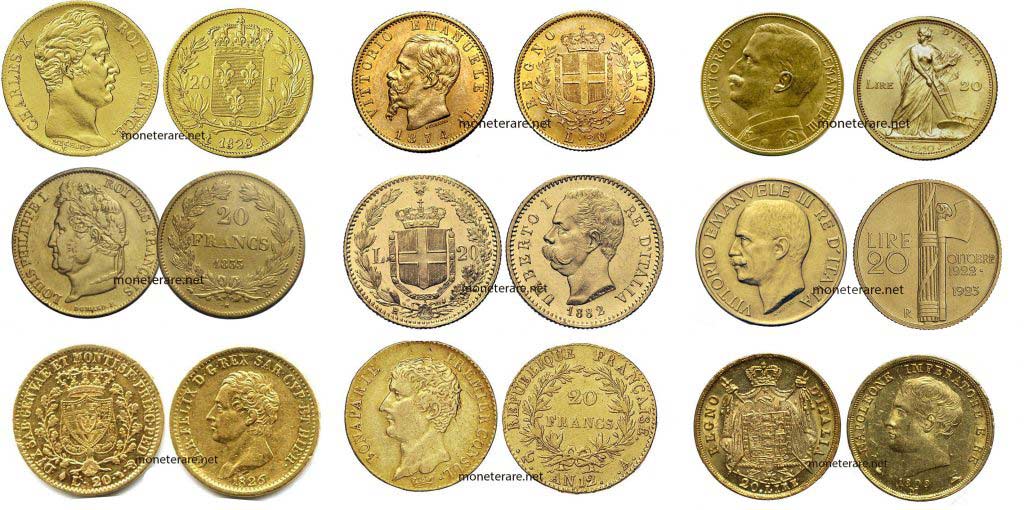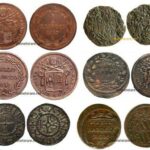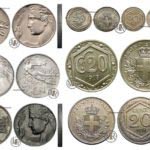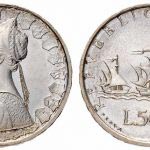The Polish coin, or currency as you like to call it, is currently the Polish zloty also known at home as the Polski zloty. “Zloty”, in fact, stands for “golden” as it indicates the value and preciousness of this object which is nowadays the current currency in Poland.
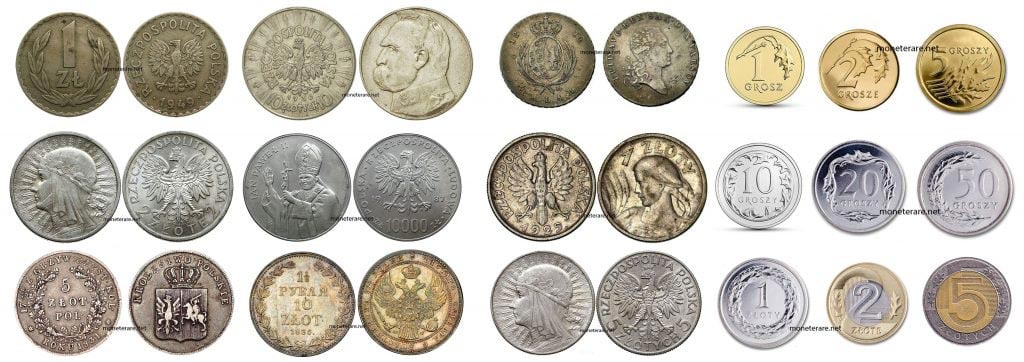
Introduction to Polish coins
Like many other European and non-European currencies, the zloty divides into cents, allowing for better management of the currency’s overall value.
Specifically, people refer to the cents as “groszy,” and they hold roughly the same value as Euro cents. 100 groszy in fact are equivalent to 1 zloty often indicated with the acronym ZL, surely of much simpler and more immediate interpretation.
As far as groszy coins are concerned, there are currently several coin denominations available “on the market”.
For example, there are coins of 1 groszy, 2 groszy, 5 groszy, 10 groszy, 20 groszy and 50 groszy. As far as zlotys are concerned, there are 1 zloty, 2 zlote and 5 zlotych coins.
In addition to these, of course, there are also banknotes equivalent to 10, 20, 50, 100, 200 and 500 zloty.
As you can see the cuts are very similar to those of the european currency, being practically identical and presenting, as said, good or bad the same value.
Specific features of Polish Coin
After having analyzed in a general way what are the various denominations and names of Polish coins it is good to go and see specifically those that are characteristics and peculiarities that the current Polish currency presents.
Both in terms of size, weight and materials, in fact, the different Polish coins differ a lot from each other and present a completely different appearance.

1 grosz Polish coin
For example, the 1 grosz coin has a very solid structure made of steel and bronze. In this case we are talking about a very light coin with a weight of 1.64 grams and a diameter of 15.5 millimeters.
2 grosz Polish coin
The 2 grosz coin is instead slightly larger as to indicate the higher value it has. In this case in fact this Polish coin, also composed of bronze and steel, has a diameter of 17.5 mm and a weight of 2.13 grams.
5 grosz Polish coin
The 5 grosz coin also consists of bronze and steel, making it very similar to other coins in Poland. However, weight and diameter, once again, vary. The first is in fact equal to 2.59 grams while the second is 19.5 mm.
10 grosz Polish coin
Things definitely start to change when you approach slightly higher cuts. Already starting with the 10 grosz coin in fact, the characteristics presented start to be different. The first noticeable feature of this Polish coin is the material. It consists of cupronickel, a material with very unique and specific characteristics. The weight is 2.51 grams while the diameter is 16.5 mm.
20 grosz Polish coin
The 20 grosz coin appears slightly larger and more massive than the previous ones. Also in this case the material used for the realization is the cupronikel and the coin has a weight of 3.22 grams and a diameter of 18.5 mm.
50 grosz Polish coin
Finally as far as the groszy we have the 50 grosz coin. It too is made entirely of cupronikel and has dimensions that vary quite a bit compared to the others. In particular the weight is 3.94 grams while the diameter reaches 20.5 mm.
Now you can finally move on to the zlotys.

These major coins no longer belong to the “cents class” but fall into the category of the main Polish coins.
1 Zloty Polish coin
The 1 zloty coin is made of cupronikel and has a weight of 5 grams net with a diameter of 23 mm round.
2 Zloty Polish coin
As for the 2 zloty coin we are talking about a type of coin made of bimetal. This means that for its realization were used two metals melted together. Specifically we are talking about the cupronikel for what concerns the inner part, while the outside is made with an alloy that also includes bronze. The weight is 5.21 grams while the diameter is 21.5 millimeters.
5 Zloty Polish coin
Finally there is the 5 zloty coin which is the one with the highest nominal value. In this case we speak of a coin made once again in bimetal but with the colors (and therefore also the metals) totally reversed. The inside is in fact composed of an alloy which also includes bronze which gives a golden color while the outside is in cupronikel which gives a silver color to the coin. As far as the specifications are concerned, these coins weigh 6.54 grams and have a diameter of 24 millimeters.
A little curiosity about the 5 zloty Polish coin: at first glance it may remind the Italian 500 Lira bimetallic coin or be mistaken for a 2 euro coin.
History of Polish Currency
As said, the zloty is the traditional Polish coin and currency which over the years has witnessed a rather troubled history. As for all nations, in fact, there were many changes before the currency became the official one and recognized by all.
The zloty actually dates back to the Middle Ages in the period between the 14th and 15th century.
At that time the term zloty was used for practically any foreign gold currency used in Poland, in particular German and Romanian dukedoms. However, as it is clear, Poland did not have a real identity towards the currency and the situation was still too chaotic and confusing from this point of view.
It was precisely for this reason that in 1496 the Parliament finally approved the creation of a national currency, the value of which was placed at 30 groshen of Prague, later changed into grosz.
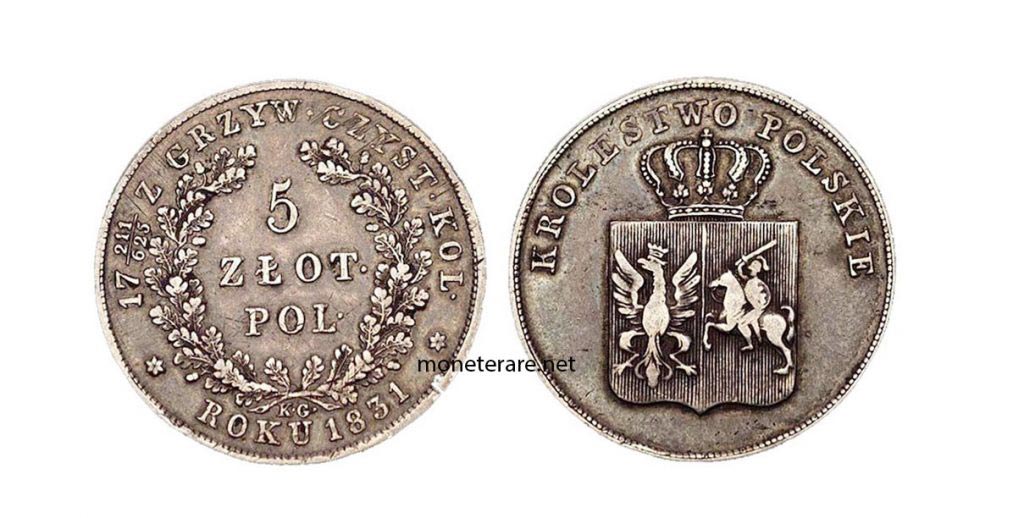
The zloty was not the only currency circulating in Poland. People used the name to refer to the 30 groszy coin called Polish gold (polski zloty) in contrast to Russian laurel (czerwony zloty) or Rhine gold (zloty renski), which were also used in Poland at that time.
The monetary reform of King Stanislaw August Poniatowski established the zloty as the official currency of Poland. It set the exchange rate at 1 ZL per 30 grams.
From the Duchy of Warsaw until 1924
The zloty remained in circulation even after the Polish divisions. At that time the then Duchy of Warsaw began to issue grosz, zloty and talar coins, which was the equivalent and had the value of 6 zlotys. In addition, thaler coins were also issued in that period.
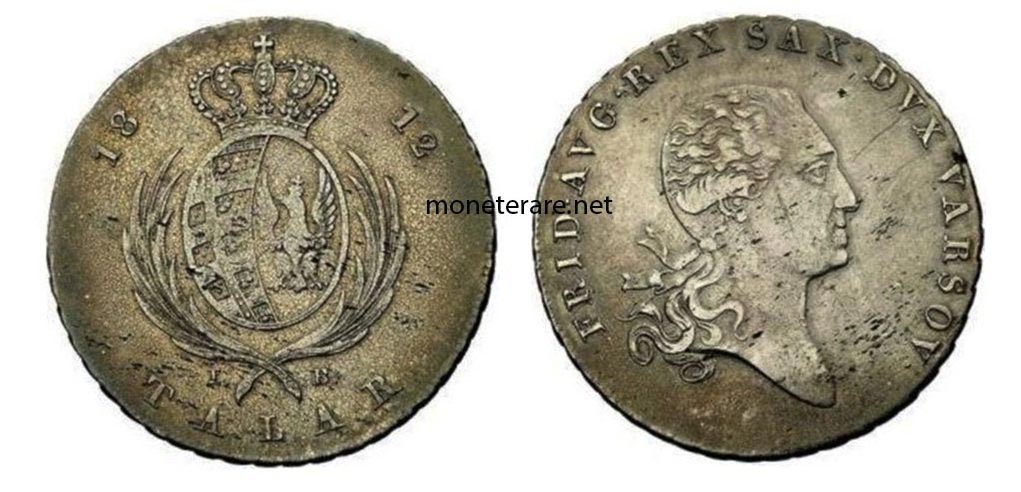
The Warsaw Mint minted zloty coins until 1841. In that year, authorities established a fixed exchange rate between Polish and Russian currencies. Specifically 0.15 rubles for 1 zloty.
However, the Polish monetary system was totally banned by the Russians after the failed revolt in January. Polish coins remained in circulation until the beginning of the 20th century, when the Republic of Krakow began printing the Krakow zloty. In 1917, however, it was replaced by the Polish Mark.
From 1924 to the end of the Second World War
The zloty was reintroduced as national currency by Wladyslaw Grabski in 1924 during the Second Republic of Poland. All this in the period that followed the monetary chaos generated by the First World War. This last Polish currency definitively replaced the Polish Mark at the exchange rate of 1 zloty / 1,800,000 Marks.
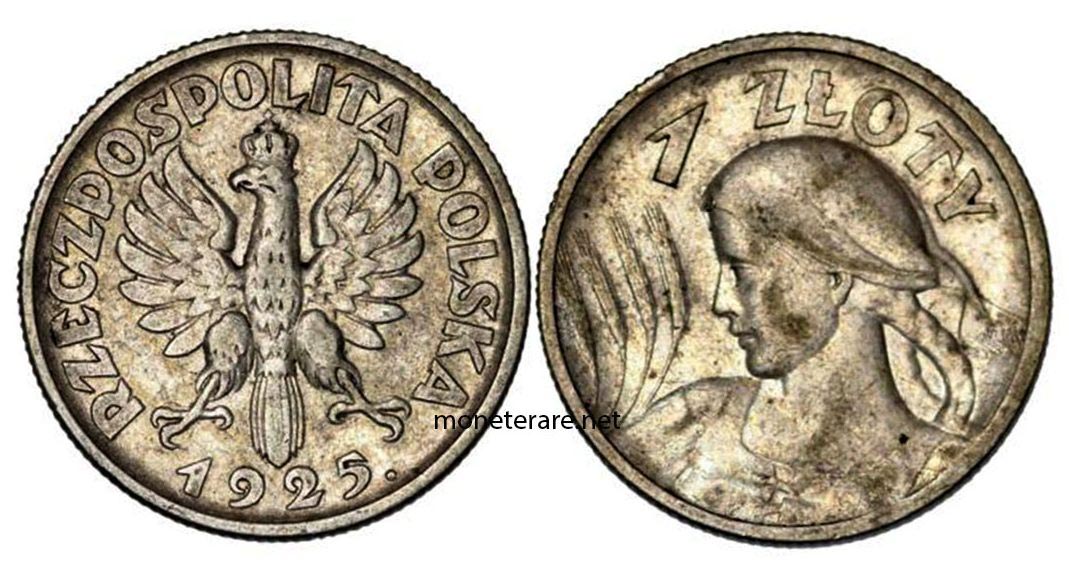
On December 15, 1939 the new Emisyjni Bank was founded by the General Governorate established by Nazi Germany.
Poland at that time was completely under German rule which also and above all regulated the production and exchange of currency in the country. In May 1940 the old banknotes of the period 1924-1939 were reprinted and a policy of control against the exchange of money from person to person was implemented.
The General Governorate also minted new coins very similar to those of the previous period but using less noble metals.
Polish coin from 1950 onwards
In 1950 a completely new zloty was introduced which replaced the old currencies at the exchange rate of 1 new zloty for 100 old zlotys.
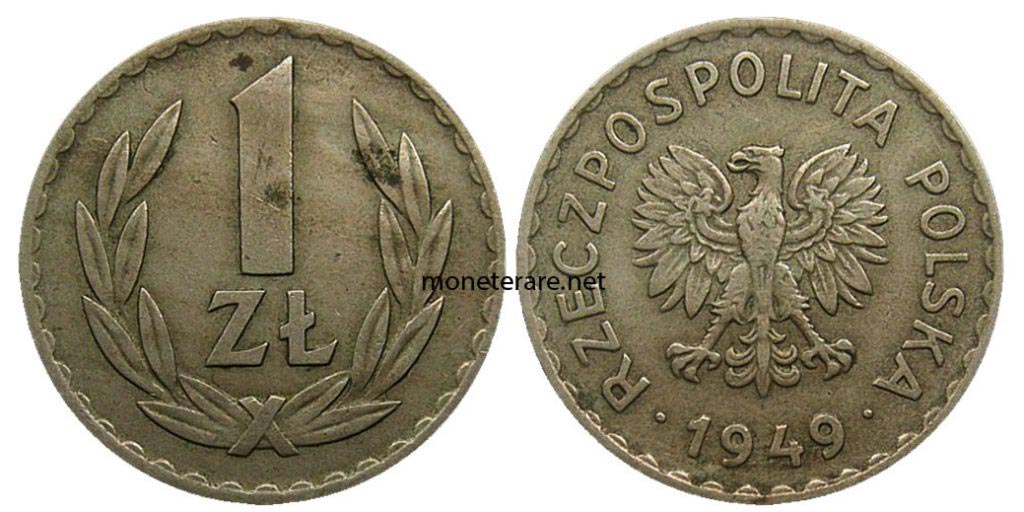
The year of production and the date of the banknotes was 1948 while for the coins it was 1949.
The initial denominations for the coins were 1, 2, 5, 10, 20 and 50 groszy and 1 zloty followed by 2, 5, 10, 20, 50 and 100 zlotych. The initial denominations for banknotes included 2, 5, 10, 20, 50, 100, 500, and 1,000 zlotych. In the seventies, authorities added 200 and 2,000 zlotych, followed by 5,000 zlotych in 1982 and, during the eighties and nineties, introduced denominations of 10,000, 20,000, 50,000, 100,000, 200,000, 500,000, 1,000,000, and 2,000,000 zlotych.
On January 1, 1995 a new currency called New Polish Zloty was officially introduced. The devaluation led to the exchange rate of 10,000 Polish Zloty for 1 New Polish Zloty.
Poland and the Euro
One question that comes naturally after analyzing the specific characteristics and history of the Polish currency is whether the Euro is actually present in Poland and if not why.
Let us start by saying that Poland is officially a member of the European Union since January 1st 2004. Despite this, however, the currency that it continues to keep is, as we have seen, the zloty as it is still considered a national currency / banknote.
But why?
The reasons behind this decision are to be found in purely political matters.
The Constitution of Poland in fact, according to its laws, would effectively block what is the spread of the new single currency, the Euro. In order for Poland to start using the single currency it would be necessary to make changes to the Constitution.
Of course, it is easy to understand that a process of this magnitude requires a really important technical time which has led Poland to use its currency again today.
This issue has often been the subject of discussion and, at present, is not aware of new information about the progress of the procedures. Poland has stated clearly that it cannot introduce the Euro before 2019. There is no guarantee that the single currency will enter circulation even after that date.
Particulars and Rare Coins of Poland
Approaching Numismatics, it is also good to go and analyze what can be the value of various types of Polish coins over the years.
Before accepting what has been said as absolute truth, we should underline that a coin’s value varies significantly based on its State of Conservation.
This differs between coins in the state of Brilliant Uncirculated, that is to say, those practically perfect up to those of inferior quality. Therefore before evaluating a coin it is good to make an analysis to an expert in Numismatics that can attest the actual state of conservation.
That said, let’s look at some of the rare Polish coins:
2 Zlote 1933
In this case we are talking about a Polish 2 Zlote coin dating back to 1933 made entirely in silver.
The obverse represents Hedwig of Poland also known as “Jadiwga” in his mother tongue. On the reverse side you can see the year of minting and the value of the coin together with the symbol of the Republic.
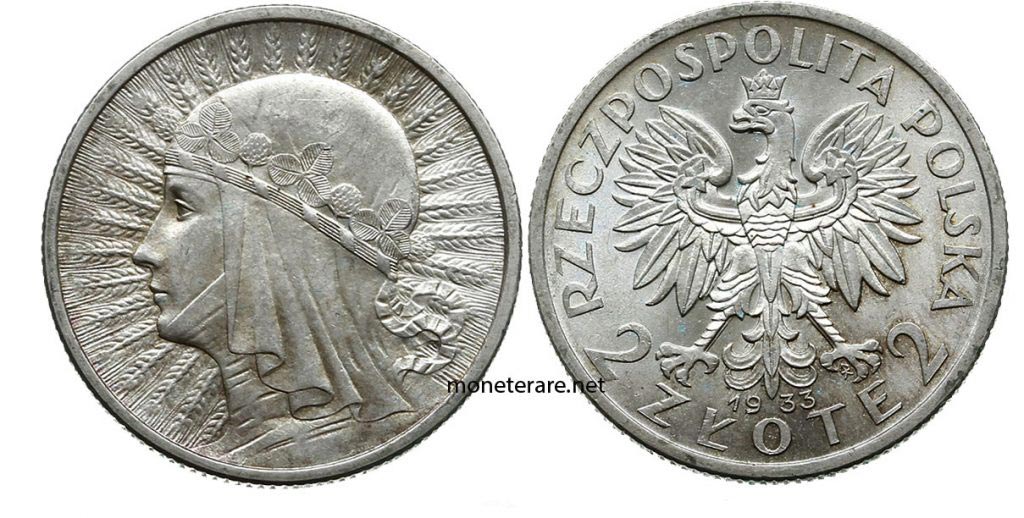
The current value of this coin from Poland is around €8.
5 Zlotych 1933
Another coin minted in poland in 1933 as the writing on the reverse clearly indicates. In this case, however, we speak of a 5 Zlotych coin also made entirely of silver. Also in this case the obverse represents Hedwig of Poland and the reverse is the symbol of the Republic.
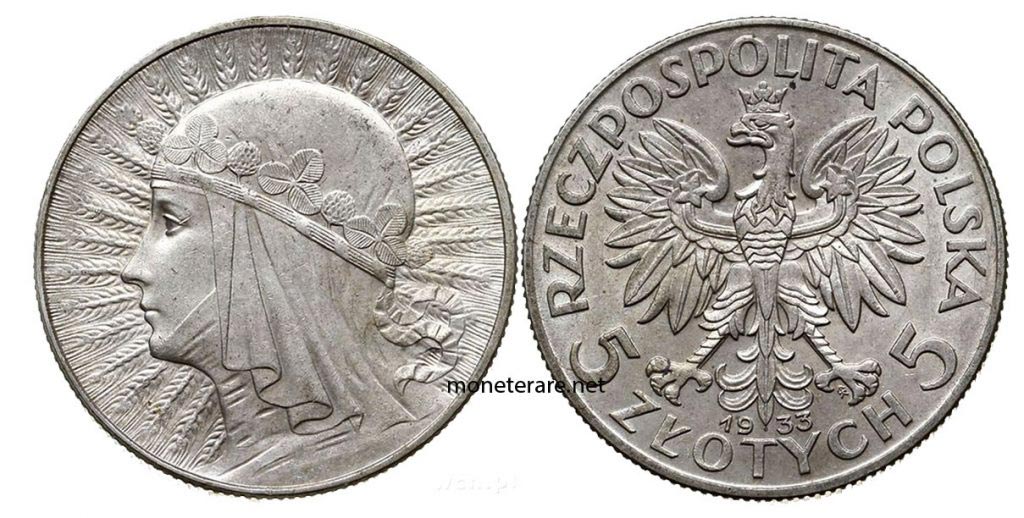
The value of this coin is €10.
5 Zlotych 1934
We are talking about a coin worth 5 Zlotych minted this time in 1934. The appearance is practically identical to the previous one even if on the back you can clearly see the year of minting, the value of the coin and the symbol of the Republic.
Looking at the obverse side clearly shows Hedwig of Poland crowned by a golden aura. The value of this coin is €15.
10 Zlotych 1936
In this case, the reference piece is a 10 Zlotych coin from 1936. It consists entirely of silver, and the obverse shows the profile of Jozef Pilsudski, leader of the Polish armed forces in the Second Republic of Poland.
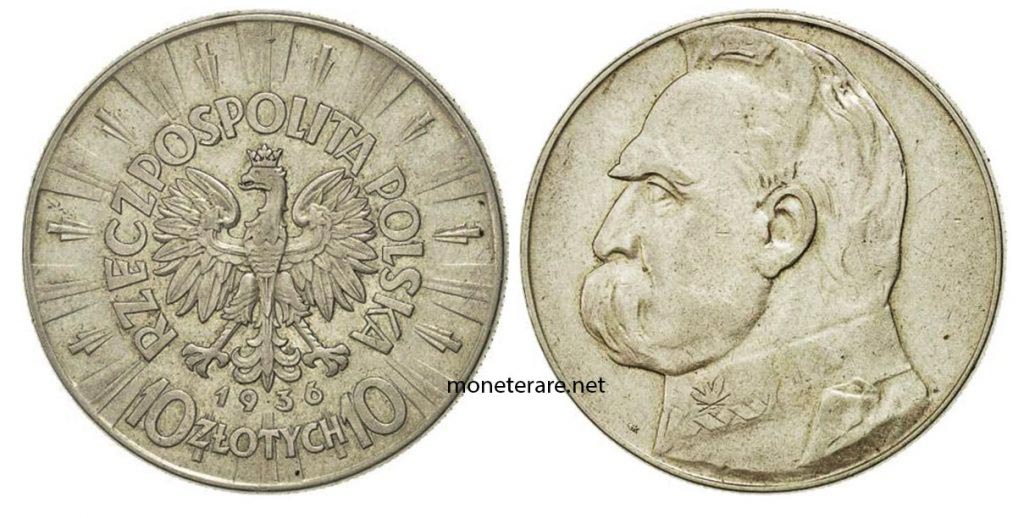
On the reverse side is represented as always the symbol of the Republic with the added value of the piece. The current value for this Polish coin is €25.
10.000 Zlotych 1987
Finally, we propose a 10,000 Zlotych coin dating back to 1987. In this case we are talking about a piece completely in silver representing the figure of John Paul II with the inscription on the side of the Pontiff.
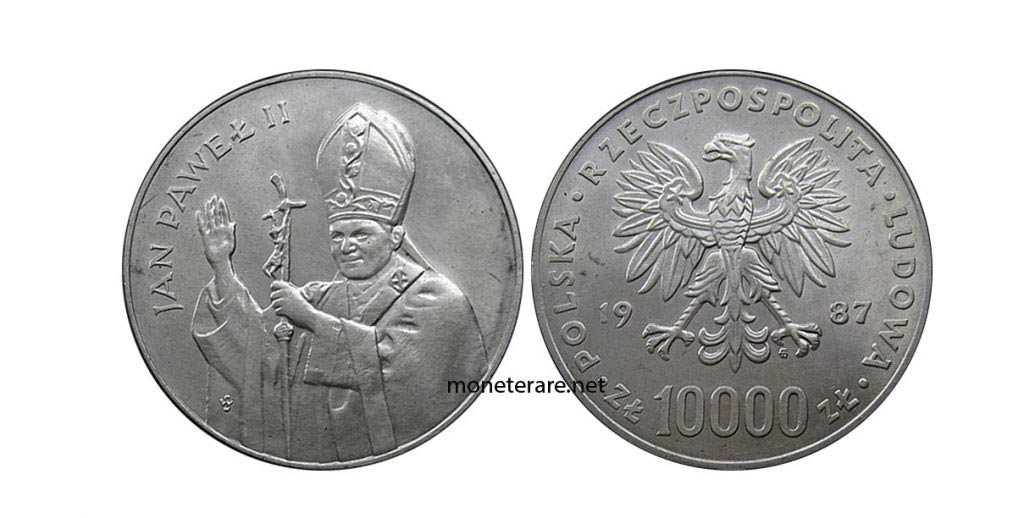
On the back the symbol of the Republic and together with the value and the year of production of the coin. The value of this polish coin is currently €30.
Didn’t find what you were looking for? Check out these topics about lira coins:
- Here you can find out everything about the 1 lira coin, 2 lira coin, 5 lire coin, 10 lire coins , 20 lire and 50-lira coins.
- The 10 lira cents are here, the 20 lira cents here, and the 50 lira cents here.
- If you are looking for the 1 cent lira coin, look here and here on the 2 cent rare lira and 5 cent lira.
- Look here If you want infos about the 100 Lire coins and also the value of the 1000 Lira of the Italian Republic.
- We have discussed the 200 lire coins and their value here.
- We have talked about Telephone Tokens worth 200 lire on this page.
- We also talked about the 500 silver lira coins, the 500 bimetallic lira and the 500 lire banknotes.
